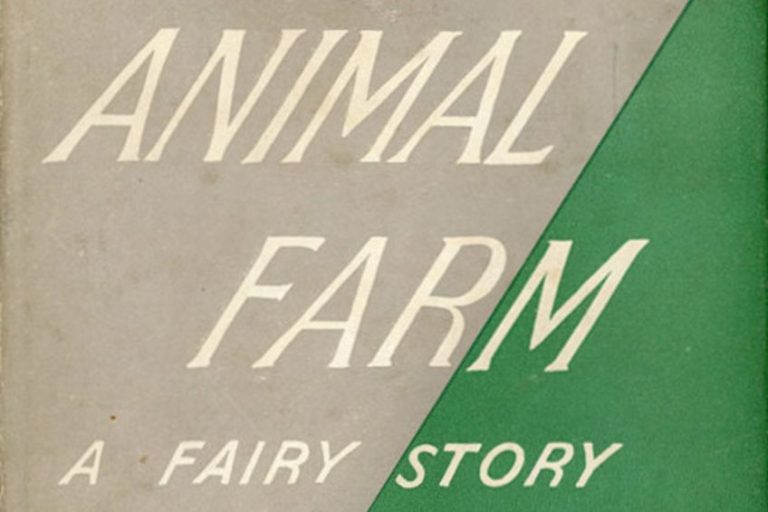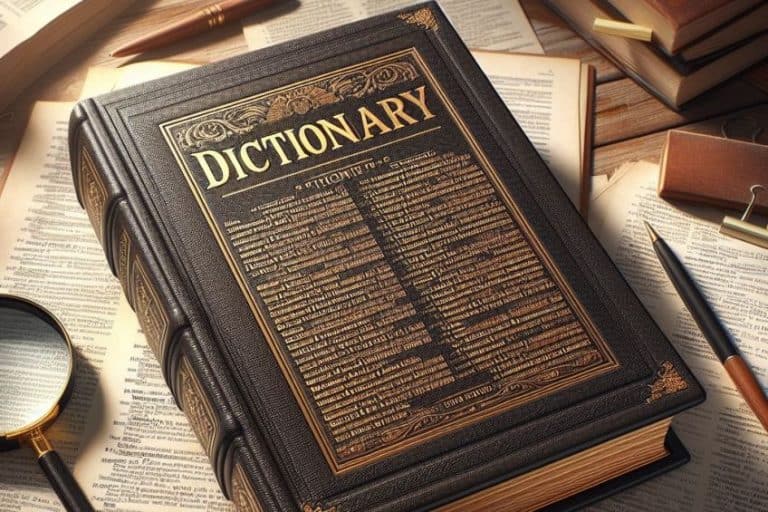Poems About Death – Discover the 10 Best Poetry Examples
Death poems have been around for about as long as poems have been around. Death is seen as constant in the lives of all humans, as it is one of the few truly universal concepts that we all experience. We have to face the deaths of others and our own deaths, and that is why we are going to have a look at a few long and short poems about death today. We are going to examine ten different poems about death, and while some of them will certainly be sad poems about deaths, they will not all be within this stereotypical understanding of death poetry. The only way to show this is to get started, so let’s do that.
Table of Contents
- 1 A Few Poems About Death
- 1.1 Epitaph to a Dog (1808) by Lord Byron
- 1.2 Lenore (1843) by Edgar Allan Poe
- 1.3 When I have Fears That I May Cease to Be (1848) by John Keats
- 1.4 O Captain! My Captain! (1865) by Walt Whitman
- 1.5 Because I could not stop for Death (1890) by Emily Dickinson
- 1.6 Dulce et Decorum Est (1920) by Wilfred Owen
- 1.7 Do Not Stand at My Grave and Weep (1934) by Mary Elizabeth Frye
- 1.8 Funeral Blues (1936) by W.H. Auden
- 1.9 Do not Go Gentle into that good night (1947) by Dylan Thomas
- 1.10 Mid-Term Break (1966) by Seamus Heaney
- 2 The Purpose of Poems About Death
- 3 Frequently Asked Questions
A Few Poems About Death
Death! Oh, Death! It is something that we must all eventually face, but many poems about death are not actually concerned with our own deaths. While we all face our own deaths, and there are many sad poems about deaths, we are also often concerned with the death of others. Death is something ever-present in our world, and in this list below, we are going to examine a number of different poems about death.
It should be noted that poems about death are often sad poems, but not all poems about the subject are necessarily sad. There are also long and short poems about death, and we all look at death in different ways. So, you shouldn’t expect a series of purely sad poems below. You should also not expect them all to be purely mournful. Death poems are often celebratory in nature too.

When we wish to commemorate someone who has died, we may be sad about it, but we will likely also be positive about their life. Poems about life and death are often found together, and one only needs to look at many eulogies to see that death poems are not always morbid things. They may not be fun, but they could joke about those who have died, or they could tell uplifting stories from their lives. So, it may be better to see the following poems as poems about life and death rather than simply as sad poems about deaths. We may all need to face death, both the deaths of others and our own deaths, but we do not always need to be so sad about it.
So, let’s have a look at what a number of different and famous poems had to say about death in this list of poems about death.
Epitaph to a Dog (1808) by Lord Byron
| Date Published | 1808 |
| Type of Poem | Epitaph |
| Rhyme Scheme | AABBCC |
| Meter | Iambic pentameter |
| Topic | Death |
Epitaph to a Dog is a poem dedicated to a dog. This dog is named Boatswain, and the dog was Lord Byron’s own dog and one that he absolutely cherished. This poem was written as an inscription for Boatswain’s tomb, and an interesting thing about this particular tomb is that it’s actually larger than the tomb that would eventually belong to Lord Byron himself. There are many who likely understand why a choice like this would be made by someone, why someone would choose to dedicate so much of themselves to a dog.
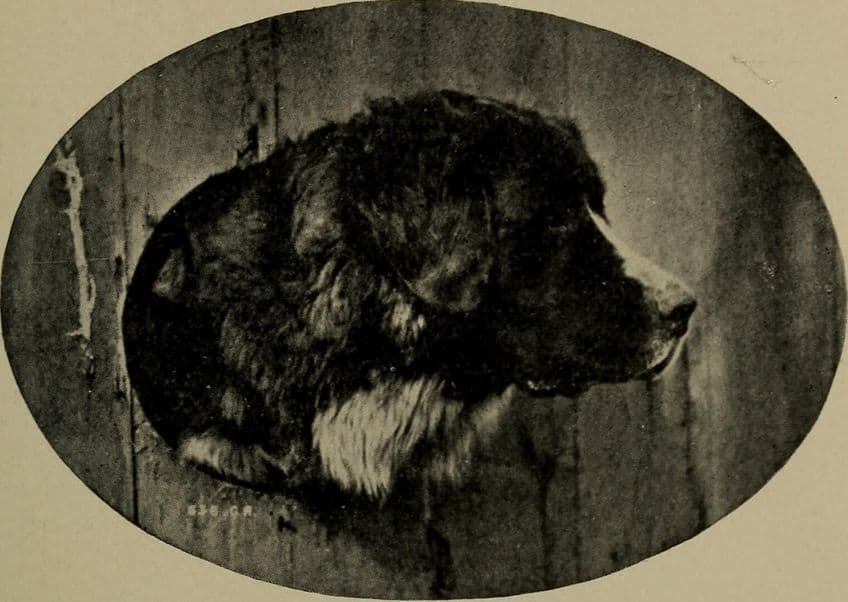
While dogs are generally considered to be pets, many do not merely see them as pieces of property even though this is what they are in terms of the law. The dogs and cats that we share our lives with can often be seen as friends, family, companions, and confidants. Many of us, myself included, see them as part of the family and worthy of respect as individual persons. It appears that Lord Byron thought similar things.
Most of the poems about death on this list will be focused on the death of humans but starting off with the death of one of our fellow creatures and a truly solemn poem that states, near the end, that the purpose of the poem is “to mark a friend’s remains these stones arise”.
There are many of us who understand why Lord Byron would go through the effort of writing a sad poem about the death of a dog, and at least this friend of Byron’s received a proper commemoration from someone.
Lenore (1843) by Edgar Allan Poe
| Date Published | 1843 |
| Type of Poem | Paean |
| Rhyme Scheme | AABBCCC |
| Meter | Various |
| Topic | Death |
Lenore is one of the most famous poems about death and it can be seen in a somewhat autobiographical sense too, but we will get to that. The poem deals with the idea of decorum in death. Basically, how are you supposed to act when someone has died, and the poem focuses on a character named Guy de Vere, and this man is the fiancé of Lenore, the woman who has died. At her funeral, someone asks him why he is not weeping as one is “supposed” to when a death has occurred.
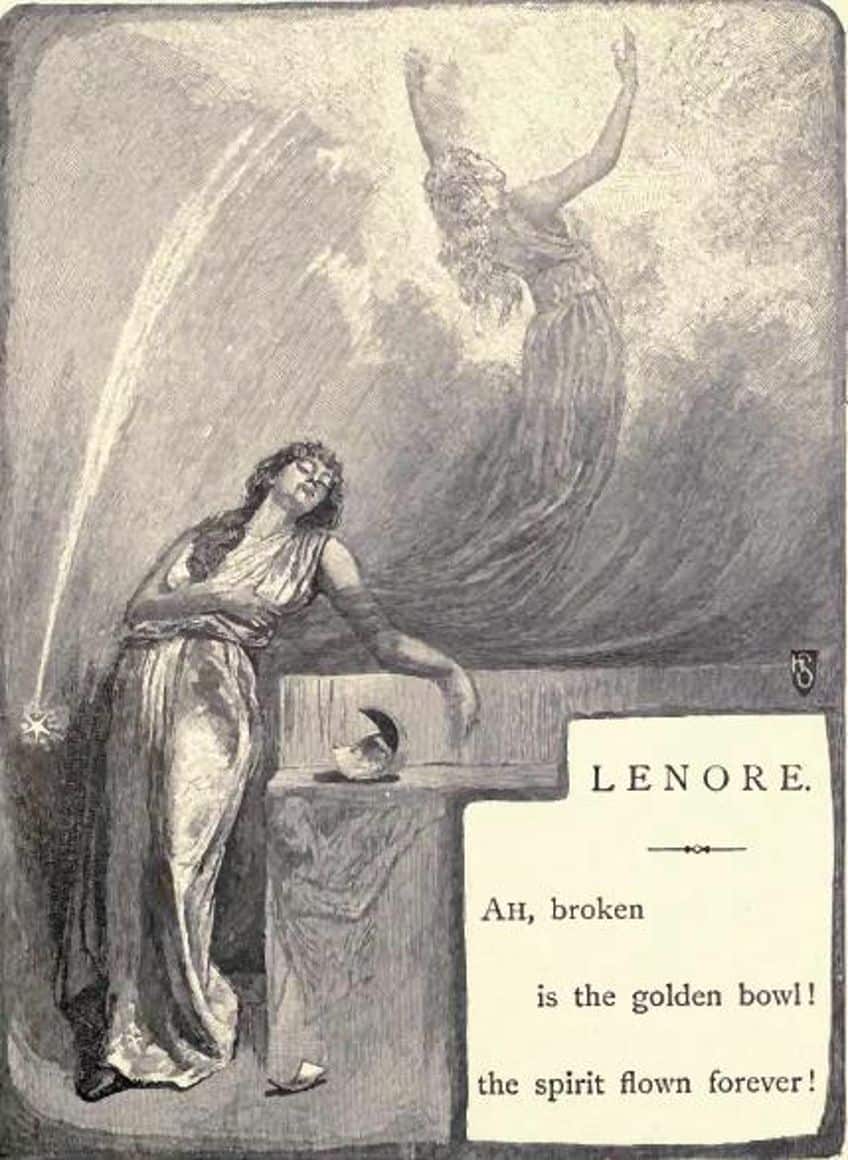
The poem questions this other mourner and slaps back against the notion that one should sit and cry over a corpse. No one knew Lenore as Guy de Vere did, and he chose to celebrate her life and mourn in his own way. He does not have to cry. He does not need to do the things that others expect one to do in such a situation. He can contemplate the dead without needing to conform to societal norms about mourning.
It has also been suggested that this poem is something of an autobiographical work for Edgar Allan Poe because he was dealing with the illness of his wife. Poe suffered several tragedies throughout his life, and many of these tragedies likely had a large impact on the work that he produced, and this poem is no different. It may have been a means of coping with her looming death.
And she would eventually die of the disease after deteriorating over the course of five years, and so examining how he would mourn may have been a means of seeking closure before her death.
When I have Fears That I May Cease to Be (1848) by John Keats
| Date Published | 1848 |
| Type of Poem | Shakespearean sonnet |
| Rhyme Scheme | ABAB CDCD EFEF GG |
| Meter | Iambic pentameter |
| Topic | Death |
When I have Fears That I May Cease to Be is one of the most famous poems by John Keats, and it focuses on his own death. Many poems about death are written about those who have passed away, but they can also be written for more philosophical reasons to do with understanding our own eventual death. We do all die, after all, and understanding how we feel about that is something that may require us to sit and consider it.
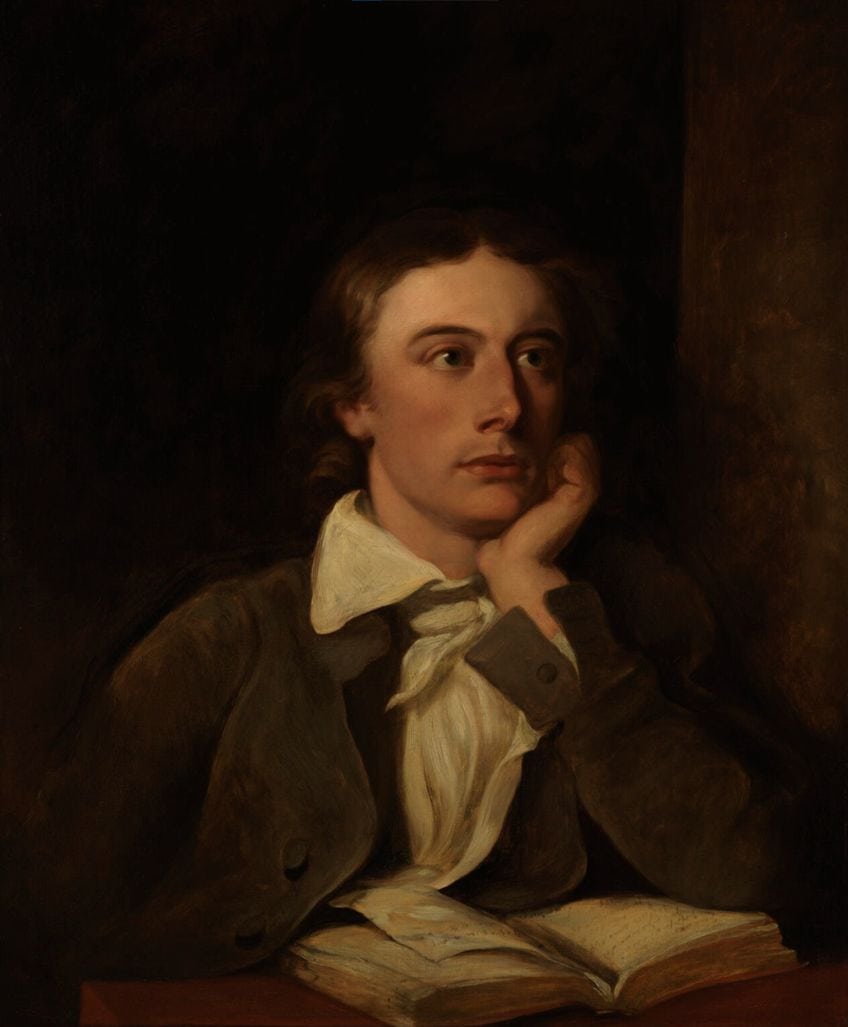
In the case of this poem, the content is one that may appeal to many creatively minded people, especially writers, like Keats himself. The poem opens with the idea of his fears that he will die, and it considers the idea that there are many things he wants to do with his life before he dies. He wants to write everything that’s in his “teeming brain” so that there can be high piles of books penned by him. He wants to create.
However, this death poem is also a darkly prophetic one as Keats died a few years after writing it. Although it was published several decades after his death and so none saw that prophetic nature until well after he was gone from the world. This could also be the same for us, for those who worry that they will not have the time to do all we wish to do.
We don’t know when death is going to take us and considering this can be something poems about death may help us to confront.
O Captain! My Captain! (1865) by Walt Whitman
| Date Published | 1865 |
| Type of Poem | Elegy |
| Rhyme Scheme | AABBCDED FFBBGDHD IIAAFDFD |
| Meter | Iambic meter |
| Topic | Death |
O Captain! My Captain! is a poem that some may not see as an ordinary death poem as it is not about death as a concept, our own deaths, or a memorial piece to some person we know, and it is instead a memorializing piece aimed at someone that Walt Whitman never even met: Abraham Lincoln. Whitman was an admirer of the president, and he had even been involved, as a member of the Union, in the American Civil War. So, when the President of the United States was assassinated, Whitman wrote a poem in commemoration.
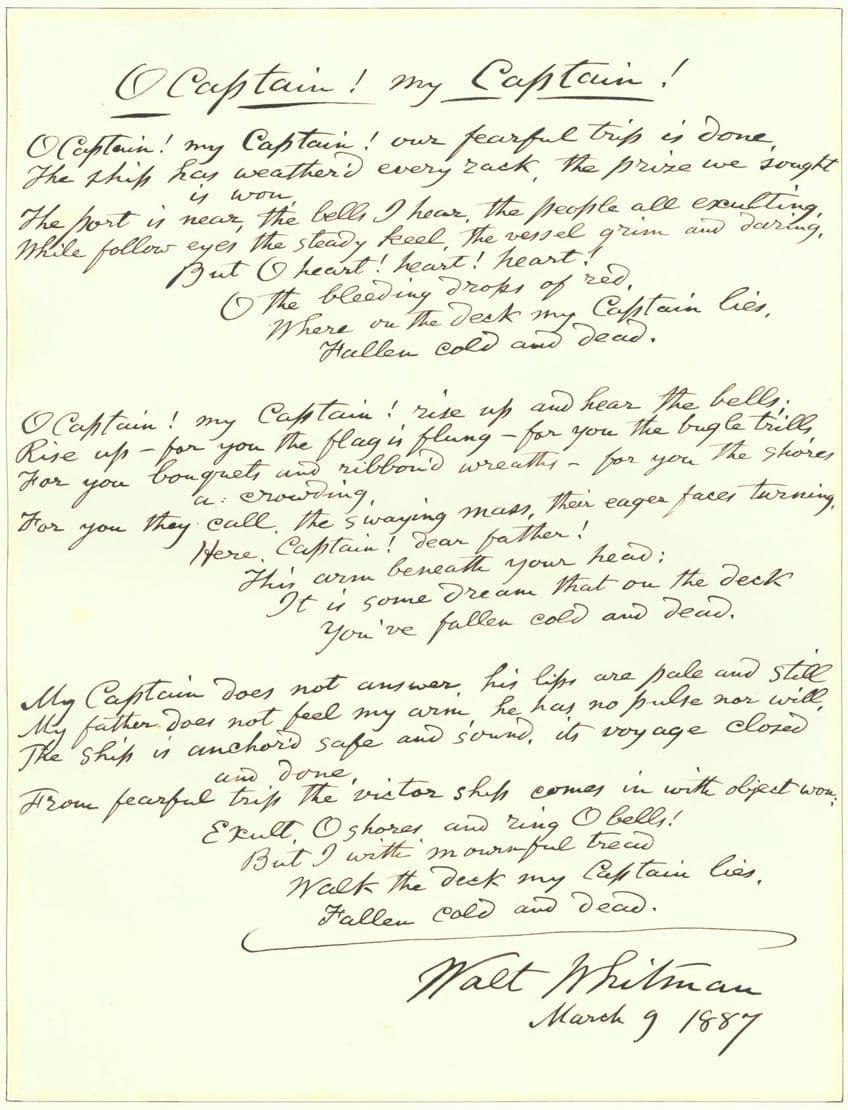
This poem is also rather interesting in the oeuvre of Walt Whitman because Whitman has come to be known as the Father of Free Verse Poetry, and this poem is not in free verse. In fact, it uses rhyme and a very rigid and repeated structure. This is notable on an individual level because death is something that could even force you out of your own, personally established routines to create something different. Walt Whitman wrote free verse, but he used a more respectable form when he wrote about the assassinated president.
The poem itself makes use of an extended metaphor of a ship and a captain. The ship has just arrived at port after a “fearful trip”, but the captain died right before the end of that dangerous journey. The metaphor is a rather simple one as the turbulent seas they had traveled through represent the recent American Civil War, the ship represents the United States, the port that they are about to reach represents the end of the war, and the captain is Abraham Lincoln himself.
This poem has become the most famous of Walt Whitman’s career and one that is often taught to this day.
Because I could not stop for Death (1890) by Emily Dickinson
| Date Published | 1890 |
| Type of Poem | Lyrical poem |
| Rhyme Scheme | ABCB |
| Meter | Variable |
| Topic | Death |
Because I could not stop for Death is one of the greatest poems about death by Emily Dickinson and a superb example of the use of personification in poems about death. This is something that is often seen in the media in general that examines death and the way that death comes for us. Death is seen as a figure that arrives at our doorstep and escorts us to the afterlife. Many fear this mythological figure of death, but Death is not usually seen as evil. But rather that the arrival of this creature marks the end.
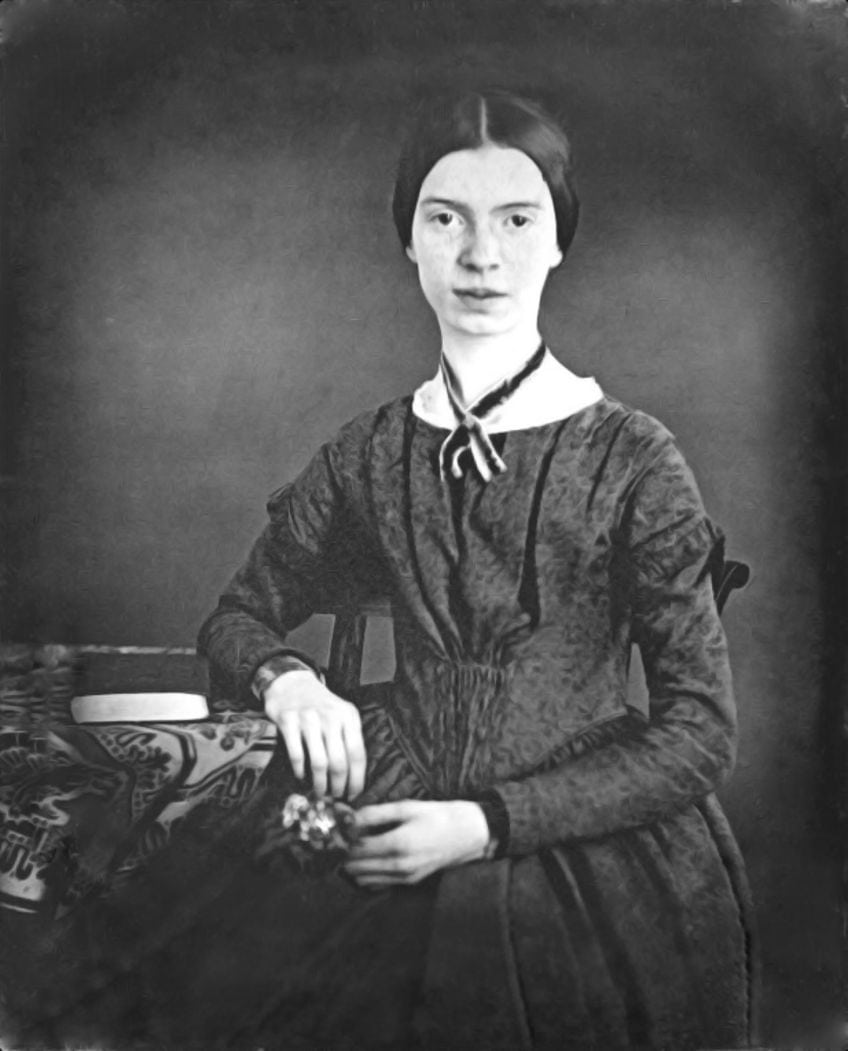
This poem does just this by portraying Death as a gentleman who arrives by carriage and takes the speaker. However, they do not rush along to reach the afterlife and instead the figure of Death “knew no haste” as they are taken to their own demise. The character of death is portrayed as civil and patient. There is no hostility here. The speaker comes to accept their own death and makes their way to the afterlife as peacefully as they can. The poem is a stunning example of the way in which we can choose to accept our deaths. We can choose to go quietly, and it does not need to be something terrifying that will wrench us from the world. Instead, there is another world waiting for us.
Although the prospect of an afterlife does only apply to those who believe in such a thing, but the idea of something existing after death is a comfort to many who need to face their deaths.
Dulce et Decorum Est (1920) by Wilfred Owen
| Date Published | 1920 |
| Type of Poem | War poem |
| Rhyme Scheme | Variable |
| Meter | Iambic pentameter |
| Topic | War |
Dulce et Decorum Est is not a poem that many would necessarily think of when asking for poems about death, but it does involve death in a place where death comes for many in incredibly high numbers. Most death poems that we encounter are interested in mourning the dead or wondering about what death means for us, but this poem instead looks at war and those who die during those wars.
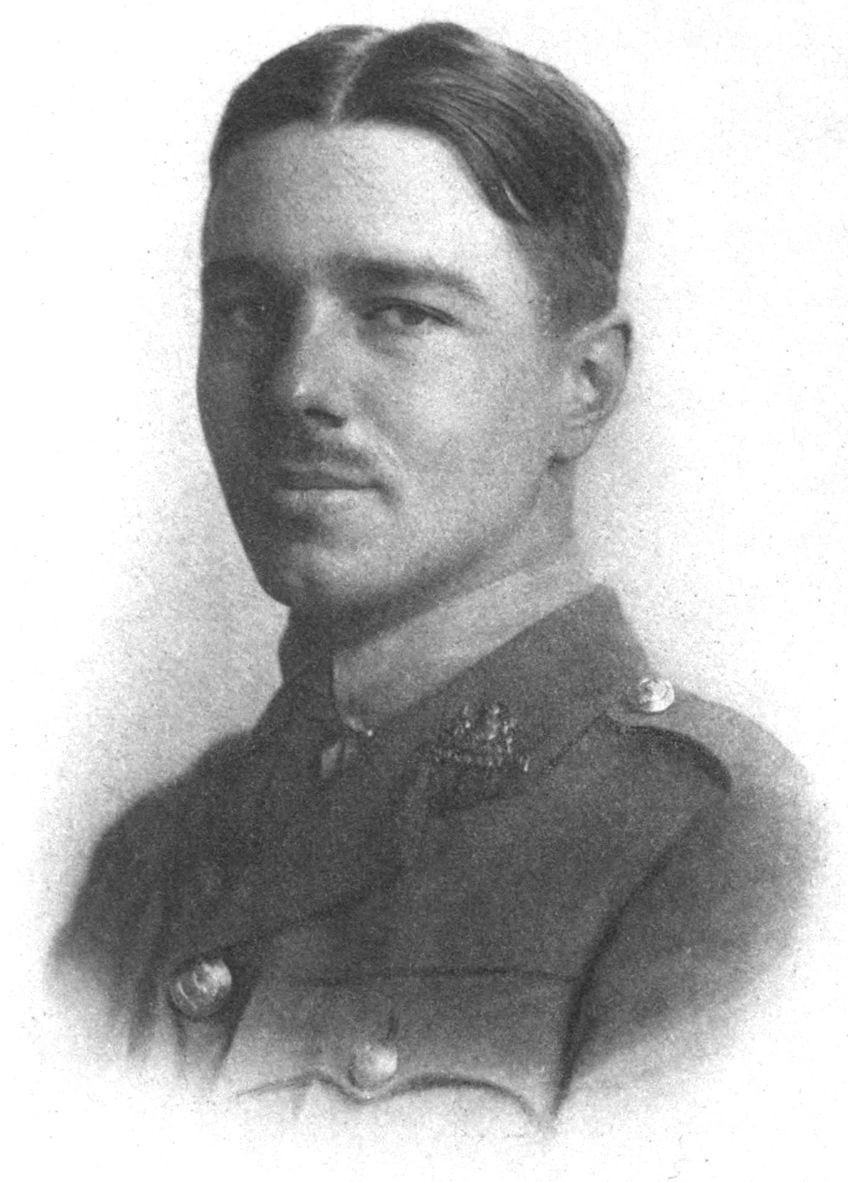
This particular poem examines a gas attack during the First World War and the way that many soldiers died because of this cruel method of chemical warfare that was employed during the life of the poet who wrote the poem. It also describes the violent death of a soldier right in front of him whom the poet saw “drowning” in the gas as the dying soldier was “guttering, choking” before his death. Wilfred Owen, the man who wrote this poem, also died very shortly before the hostilities came to an end and so he too was a victim of the death machine that is war. We may not generally see war poems as poems about death, but they are.
They show the highly unnecessary deaths of so many who perish because of political decisions made by those who would never face the same kind of danger.
Do Not Stand at My Grave and Weep (1934) by Mary Elizabeth Frye
| Date Published | 1934 |
| Type of Poem | Bereavement poem |
| Rhyme Scheme | AABB |
| Meter | Iambic tetrameter |
| Topic | Death |
Do Not Stand at My Grave and Weep is a poem that comes from a dark and understandable place. We are all going to die. Every single one of us is destined for this tragic turn of events, provided we all even see it as tragic. And this means that there are likely going to be those who stand over our graves at some point.

This poem attempts to dissuade us from this. We should not be standing over the graves of those who have died, because, as the speaker says: “I am not there”. This has a more spiritual meaning behind it for those who believe in such things, but to those who do believe, why would the body of the dead matter all that much? When we die, according to those who believe in spiritual and religious matters, we will go to another place. Our mortal body has been abandoned and our soul has gone elsewhere.
We have become something different, and there is no point in weeping over the grave because while the body is dead, the soul is still alive.
Funeral Blues (1936) by W.H. Auden
| Date Published | 1936 |
| Type of Poem | Elegy |
| Rhyme Scheme | AABB |
| Meter | Irregular |
| Topic | Death |
Funeral Blues is a poem that opens with a very famous line in poetry: “Stop all the clocks”. The poem continues with a variety of things that need to be stopped or altered to make room for the mourners who will soon stand over the coffin and mourn for the one who has been lost to them forever.
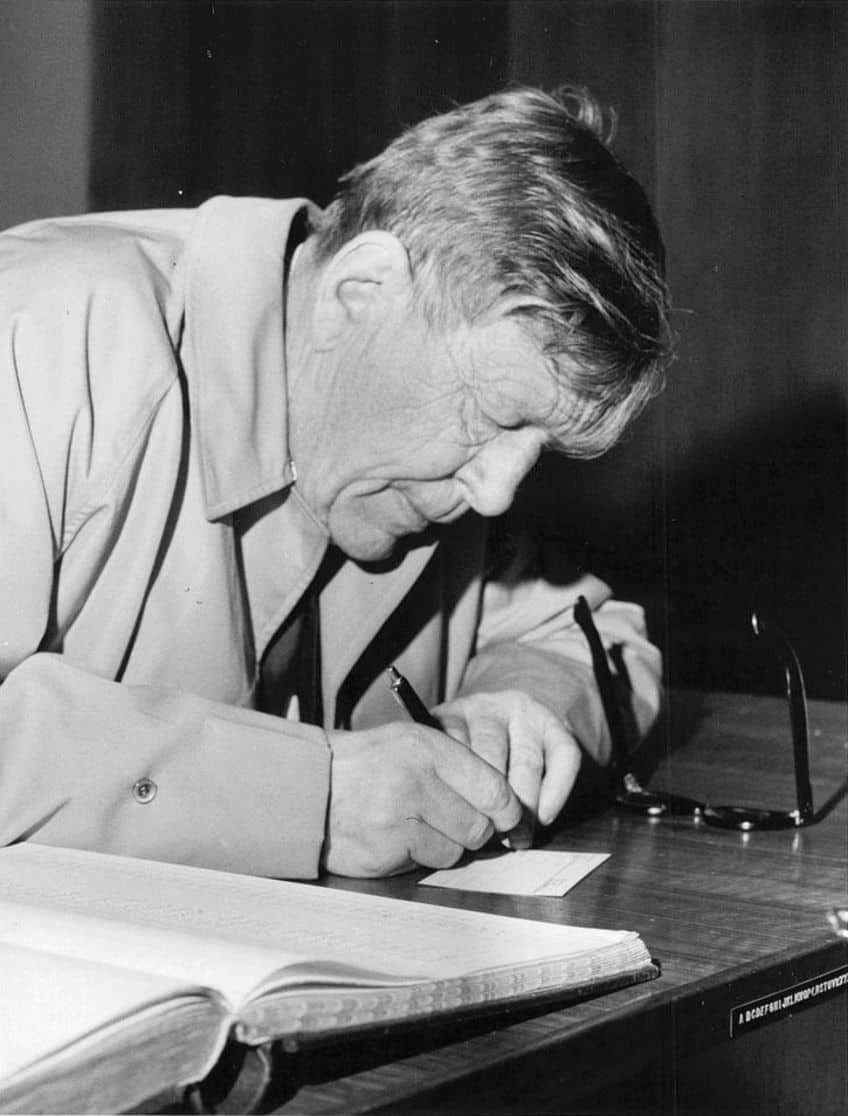
The poem looks at some of the life of the dead too, and how they had assumed that their regular week, their time off, and their lives, in general, would “last forever”, but they were wrong. It has come to an end. The poem ultimately ends on a far darker note as it wants the stars, oceans, and moon to come to an end along with his own demise. Anger at the prospect of death, especially our own deaths, is something that can be explored in poems about life and death. We may mourn those who have passed, but our own deaths are things that we often see as distant or even impossible. We cannot have this life taken from us. That would be cruel and wrong. We do not deserve it.
Yet it comes for us regardless of that.
Do not Go Gentle into that good night (1947) by Dylan Thomas
| Date Published | 1947 |
| Type of Poem | Villanelle |
| Rhyme Scheme | ABA ABA ABA ABA ABA ABAA |
| Meter | Iambic pentameter |
| Topic | Aging and death |
Do Not Go Gentle Into That Good Night is one of the most famous poems about aging and death, and it does this with a far angrier tone. The poem, as an example of a villanelle, makes use of a specific rhyme scheme and structure in which two of the lines are repeated several times throughout the poem. These repeated lines are meant to be strong ones that reinforce the meaning of the poem, and they do that in this case.
The two repeated lines are concerned with how we should approach death. The first is “Do not go gentle into that good night” and the second is “Rage, rage against the dying of the light”. Both of these lines are clearly angry. The first tells us that we must not simply accept our death in old age, and the second tells us that we must fight against the line at the end of the tunnel.
Many poems about death focus on accepting death or finding closure in it. Not this time around. This poem wants us to be furious at death. It is taking the thing that we know, life, in favor of something that we cannot possibly know or understand, death. So, don’t accept your death. Fight against it and live for as long as you can.
Or at least, this is what the poem wants us to do.
Mid-Term Break (1966) by Seamus Heaney
| Date Published | 1966 |
| Type of Poem | Narrative poem |
| Rhyme Scheme | None |
| Meter | None |
| Topic | Loss and grief |
Mid-Term Break is one of the many sad poems about deaths that can be found in the world, and, in this case, it also has autobiographical elements. Seamus Heaney experienced the death of his younger brother when he too was in school, and the poem focuses on what he experiences as he comes home from school to attend the funeral. It does not focus on what he thinks and instead shows how everyone else reacts.

It shows a few interesting things, such as his father crying while his mother does not cry and instead projects anger at the death. It was an accident that killed the child, and the typical understanding of men remaining stoic and women being emotional is turned on its head in this poem. The naturalistic descriptions are those that are understandable to anyone who has been forced to deal with the death of someone close to them, and for this reason, this poem about death will likely resonate with many who have experienced similar things.
While many poems about death focus on the way that the speaker feels, there is something to be said about rather describing what is seen instead of what is felt. This can also mimic the way in which many experience shock when being confronted with the death of someone who should not have died. You may not cry or weep and instead become cold and stoic.
You may instead contemplate and pass through the house as if on autopilot. We all process grief in very different ways.
The Purpose of Poems About Death
We may have examined ten different poems about death, but what is the purpose of a poem about death? Well, there are many different purposes for many different reasons. One of the benefits of writing about death is that it is a universal concept. It applies to all of us. We must all face death in a number of ways, and we are also taught to deal with death from a young age.
When we are young, we are often taught about death through the deaths of animals and the elderly. They are the ones likely to go first in our lives. The first because of their shorter lifespans and the latter because they are a lot older and will statistically die before their kids. Although this is, of course, not always the case.

Poems about death are there for this reason. We all experience it. As children, we may be more likely to experience the deaths of animals or the elderly, but as we age, unless there is a tragedy earlier in our lives, we start to lose our parents, siblings, friends, and romantic partners. Losing someone can be a very difficult thing for many to cope with, and this is also what one of the poems we discussed above is about, Lenore (1843) by Edgar Allan Poe. We all experience death and mourning in different ways.
For this reason, poems can be used to express our sadness and our grief. There is no shortage of sad poems about deaths in the world, and some of them are very individualized and some are more general. Many poets have lost loved ones and then written about their feelings of loss as a result of that person passing away. The expression of grief is a cathartic exercise. We often need to grieve if we hope to find closure and move on from someone’s death, especially when they were very close to us in life.
Poems about death can also be there as a way of seeking comfort, such as by examining the lives of those who have died.
This is also why many of these poems are actually poems about life and death rather than only the one. Those who died were once alive, and that means that they had complex inner lives, histories, personalities, and so on. We may wish to celebrate the life that existed before death came knocking. This can also be a way of memorializing that person who has passed away.
On the other hand, we may also examine death so that we can better appreciate life. For instance, the genre of carpe diem poetry is a good example of this. These poems are not about death, but rather about life when faced with death. When any day could be your last, why not live every day as if it is your last? Seize the day! You never know. You could be hit by a car tomorrow or have a brain aneurysm in your sleep. This may be a morbid way to think, but if you know that you could die at any moment, you may be more willing to live your life to the fullest.

And this also ties in with the more philosophical reasons for writing poems about death. Death is a universal that will eventually reach us all. That’s why poets like John Keats in the poem discussed above, When I have Fears That I May Cease to Be (1848), were so concerned with what can be accomplished with life until death cuts it short. We could accomplish so much more if we had more time, but we have very limited time, and many poets wish to explore that idea. They want to understand what death does to our minds. What it does to us when we consider it before it happens.
This has been only a short examination of what poems about death could see as their purpose. Different poems may explore death in different ways than those that have been discussed in this short section, but there are purposes for death poetry that we have not examined. Perhaps you may feel that death poetry does something very differently for you than the reasons discussed here. However, we cannot discuss this forever, but it is something that can be very interesting to think about.
And with that final discussion about the purpose of these kinds of poems, we have arrived at the end of our look at poems about death. We have looked at ten different long and short poems about death to examine the various ways that death can be discussed in poetry. Hopefully, this has given you a good overview of what is out there when it comes to death poems, and if you need a poem to help you cope with the idea of death, then perhaps one of the poems we have discussed above can help you along with that.
Frequently Asked Questions
What Is a Death Poem?
A death poem can be defined as any poem that is about death. This does not have anything to do with the tone of a poem, as a poem about death does not need to be sad. While there certainly are many sad poems about deaths, there are also many positive poems about death. For instance, a death poem might examine the life of the person who died and discuss the positive things that they did in the world. In addition, a poem about death could offer closure to those who need it. They are not simply unhappy and morose things, but instead serve as a means of understanding ourselves and our place in the world.
What Are Some of the Most Famous Poems About Death?
There have been numerous famous poems about death, and some of the most famous of them all include Lenore (1843) by Edgar Allan Poe, Because I could not stop for Death (1890) by Emily Dickinson, and Do not go gentle into that good night (1947) by Dylan Thomas. However, this is only a short selection of poems about death, and there are many others out there. These poems also all have vastly different ways of approaching the topic of death. For instance, they could be sad, contemplative, or angry. There is no definite tone to a poem about death.
What Are the Characteristics of Poems About Death?
While we may often associate poems about death with a darker tone, this is not a definite thing. However, death poems do often make use of more thought-provoking elements, the personification of Death as a character, a memorializing style that pays homage to those who have died, and comforting aspects that are meant to aid in understanding and processing pain and loss. However, any characteristics could be used in a death poem. For instance, a poem about the death of a terrible person could be jovial in tone and it would not stop the poem from being about death.
What Is an Elegy?
This is a type of poetry that is often concerned with death or loss. This type of poem does not need to be about a person or even a living creature, and so it does not need to be about death itself. However, elegies are a kind of mournful poem that is written in remembrance of something. There are no definitive characteristics of elegies, and they can use any style, but death poems are often also elegies, but not all elegies are death poems. So, it’s a useful term when looking at death, but not a catchall one.
Which Poets Are Famous for Writing Death Poems?
There have been many poets who are famous for their poems about death, and it’s likely that none are as famous for writing about death as Edgar Allan Poe. However, poets like Emily Dickinson, Dylan Thomas, and Walt Whitman have become famous for some of their poems about death, but these poets did not only write about death, and their work is not as darkly fixated on such topics as the work of someone like Edgar Allan Poe.
Justin van Huyssteen is a freelance writer, novelist, and academic originally from Cape Town, South Africa. At present, he has a bachelor’s degree in English and literary theory and an honor’s degree in literary theory. He is currently working towards his master’s degree in literary theory with a focus on animal studies, critical theory, and semiotics within literature. As a novelist and freelancer, he often writes under the pen name L.C. Lupus.
Justin’s preferred literary movements include modern and postmodern literature with literary fiction and genre fiction like sci-fi, post-apocalyptic, and horror being of particular interest. His academia extends to his interest in prose and narratology. He enjoys analyzing a variety of mediums through a literary lens, such as graphic novels, film, and video games.
Justin is working for artincontext.org as an author and content writer since 2022. He is responsible for all blog posts about architecture, literature and poetry.
Learn more about Justin van Huyssteen and the Art in Context Team.
Cite this Article
Justin, van Huyssteen, “Poems About Death – Discover the 10 Best Poetry Examples.” Art in Context. November 15, 2023. URL: https://artincontext.org/poems-about-death/
van Huyssteen, J. (2023, 15 November). Poems About Death – Discover the 10 Best Poetry Examples. Art in Context. https://artincontext.org/poems-about-death/
van Huyssteen, Justin. “Poems About Death – Discover the 10 Best Poetry Examples.” Art in Context, November 15, 2023. https://artincontext.org/poems-about-death/.




